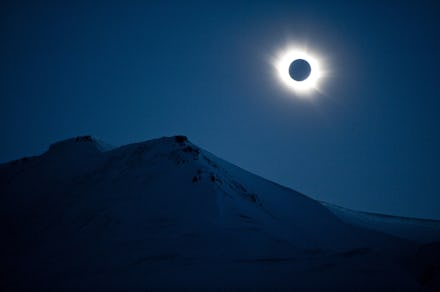Out of Office: Everything you need to know about the solar eclipse

The once-in-a-lifetime total solar eclipse is upon us. The overwhelming amount of information being pushed on us — what to buy, where to travel, how to prepare and stay safe — has made the sky show’s approach abundantly clear.
No matter how rare and special the event may be, no one has the time or energy to search the infinite depths and widths of the internet to prepare themselves for it. We get that, so we compiled a one-stop, definitive guide to pretty much everything you need to know before Aug. 21, according to eclipse experts and astrologists.
Tip No 1: “Take a picture, it’ll last longer.” — Solar Eclipse
If you witness a total eclipse and don’t share pictures of it on social media, did you really witness it? Solar eclipses are rare events. Total solar eclipses are even rarer, and this month, all of North America will be able to witness the eclipse in various stages of totality.
If you want to capture the eclipse, it shouldn’t be a game-day decision. You need safety precautions and lots of preparation, according to photographers who specialize in celestial events. Mic talked to seven photographers who shared their best tips for shooting eclipses.
Tip No 2: Don’t let your location stop you from experiencing it
If you’re lucky enough to live along the path of totality, you’ll have a front seat to the greatest show on Earth — a rare event many say is life-changing. But if you live anywhere in the United States, you’ll be able to see at least partial eclipse, which means you’re in for some breathtaking sights as the moon partially obscures the sun.
If you’re staying put in a major city like Los Angeles or New York, Jackie Faherty, an astronomer at the American Museum of Natural History, has a few tips for getting the most out of the Great American Eclipse.
Tip No 3: Make sure you have the proper tools to optimize the experience
You’ll want to make sure you have all the necessary gear to observe this rare solar phenomenon — especially since it’s probably the most exciting thing to happen on a Monday in America in 99 years.
Whether you’re traveling across the country, driving a few hours from home or watching from your own backyard, you’ll need protective glasses, binoculars, photo equipment and other items in order to have the best possible viewing experience come Aug. 21. The Total Solar Eclipse app will help you track the point of totality and other eclipse details on the big day, but there are a few other key items you’ll need to pack for this trip.
Tip No 4: Don’t be that guy facing in the wrong direction
The sun rises in the east because Earth is rotating in that direction, so surely the eclipse should also start in the east and move west, right? Nope.
The key to the eclipse’s seemingly strange path is the moon, which orbits around the Earth from west to east — or counterclockwise, if you were hovering in space way above the North Pole. Here’s a complete explanation of the direction of the solar eclipse and how to face for the proper viewing experience.
Tip No 5: Prepare yourself mentally and spiritually
Even if you’ve read so much about what happens during a total solar eclipse that you swear you could quit your job and go to work for NASA tomorrow — but are you prepared for the psychologically and spiritually of this “life-changing” event?
Mic spoke to astrologers and an eclipse chaser, all of whom agreed the eclipse won’t just be about what you’ll see, but what you’ll feel — and that despite your likely skepticism, harnessing the eclipse’s effects long after the temperature returns to normal and the sun emerges from its temporary hiding spot is how the event really becomes a “once-in-a-lifetime” affair.
P.S. The solar eclipse glasses you bought might be fake — here is how to tell.